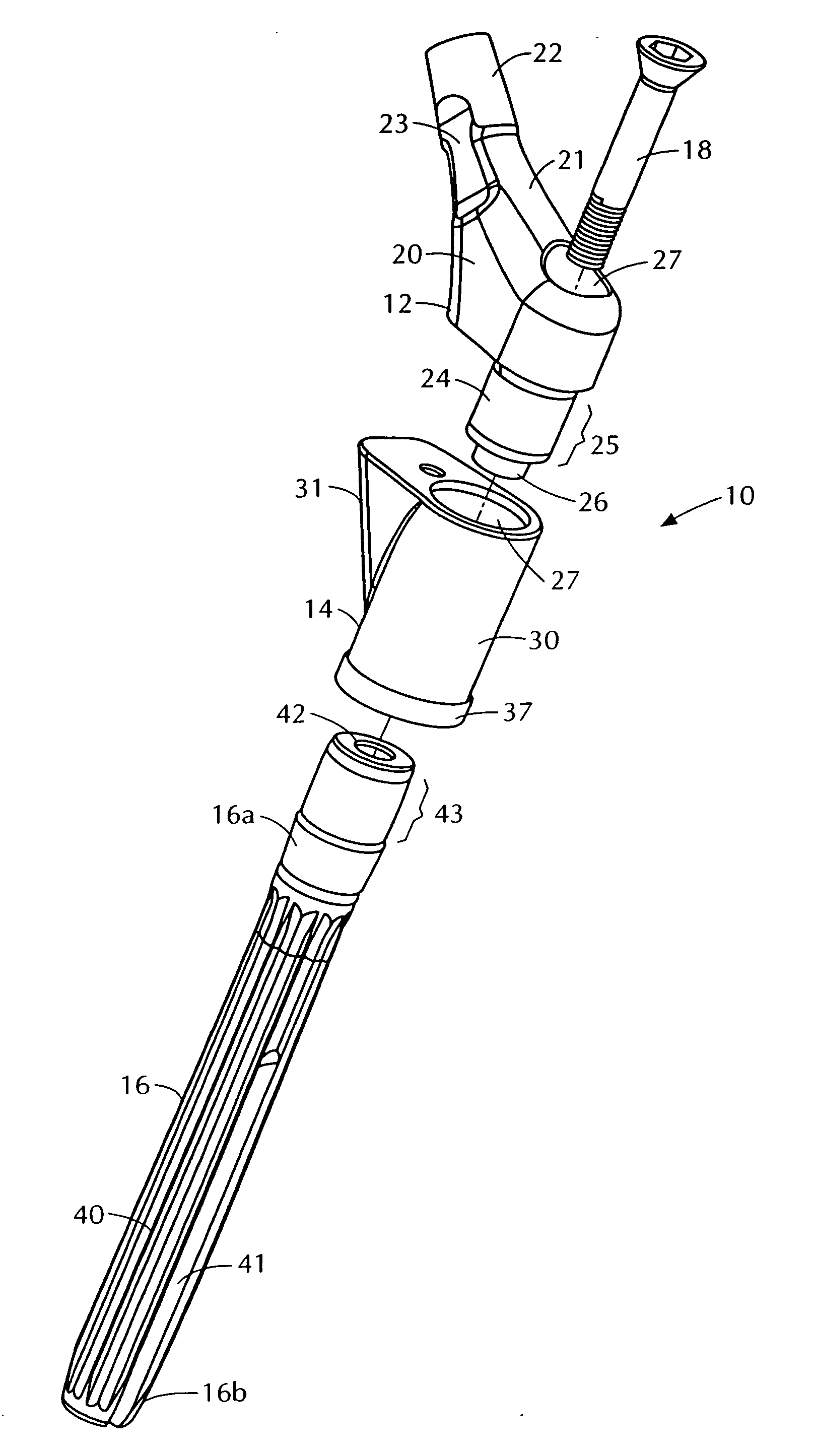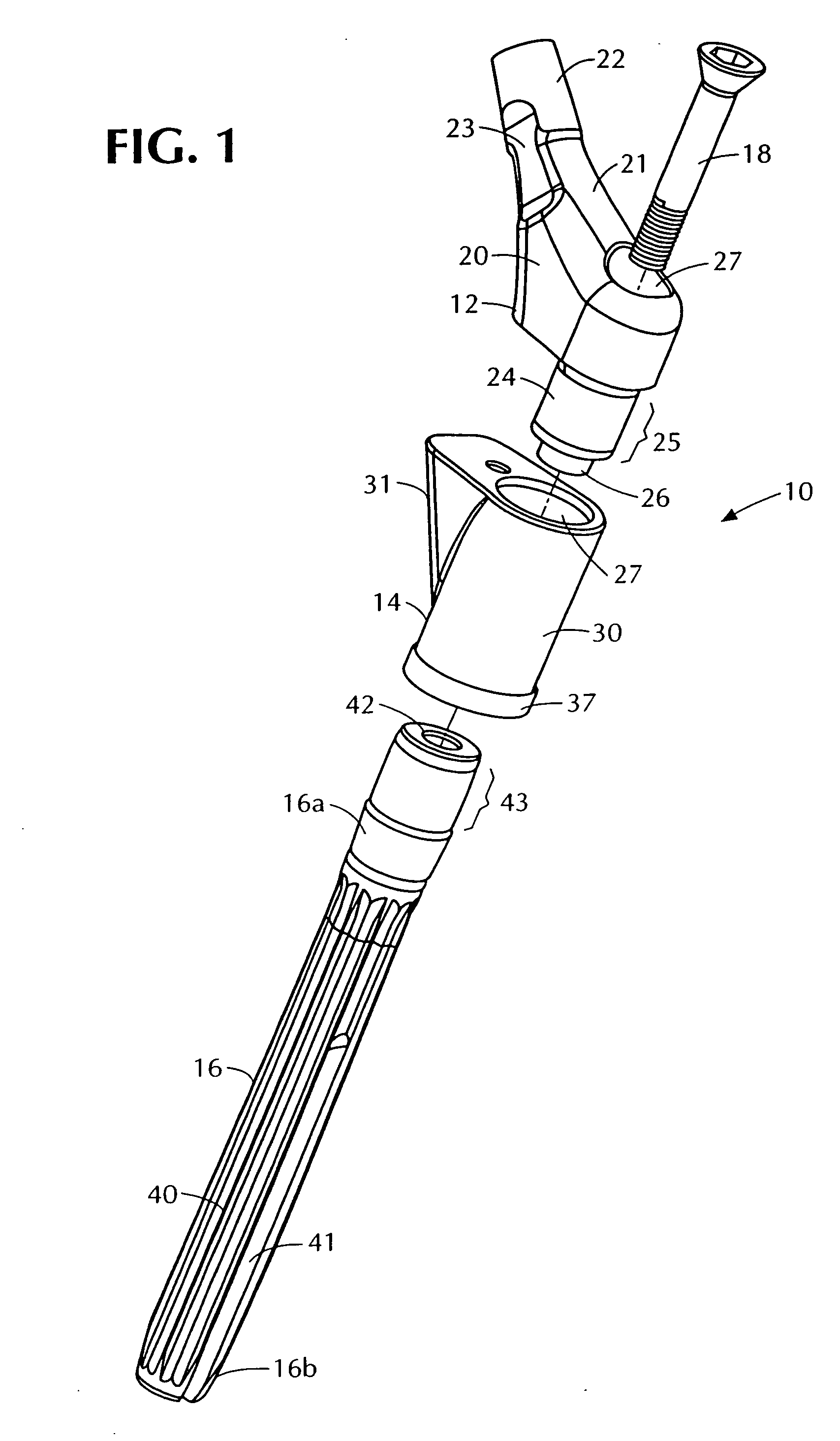Modular hip prosthesis
a hip and hip technology, applied in the field of total hip arthroplasty, can solve problems such as structural compromise at the metal-metal interconnection, and achieve the effect of superior resistance to component disengagement during us
- Summary
- Abstract
- Description
- Claims
- Application Information
AI Technical Summary
Benefits of technology
Problems solved by technology
Method used
Image
Examples
Embodiment Construction
[0017] Referring now to FIGS. 1-8, wherein like reference numerals are used to identify like components throughout the various views, a first embodiment of the modular hip prosthesis of the invention is shown generally at 10. As shown in FIG. 1, hip prosthesis 10 generally includes: (a) a proximal segment 12; (b) a metaphyseal segment 14; and (c) a distal segment 16. A threaded screw 18 may optionally be used to enhance locking engagement of segments 12, 14, and 16 as described below. As here embodied, proximal segment 12, metaphyseal segment 14, and distal segment 16 are each constructed as separate parts. As a result, the segments may each be sized independently of one another. Such independent sizing capability gives the prosthesis modularity—that is, it provides the surgeon with a wide selection of prosthesis configurations to accommodate virtually every anatomical condition encountered during surgery. Advantageously, the modular prosthesis 10 of the invention may be implanted u...
PUM
 Login to View More
Login to View More Abstract
Description
Claims
Application Information
 Login to View More
Login to View More - R&D
- Intellectual Property
- Life Sciences
- Materials
- Tech Scout
- Unparalleled Data Quality
- Higher Quality Content
- 60% Fewer Hallucinations
Browse by: Latest US Patents, China's latest patents, Technical Efficacy Thesaurus, Application Domain, Technology Topic, Popular Technical Reports.
© 2025 PatSnap. All rights reserved.Legal|Privacy policy|Modern Slavery Act Transparency Statement|Sitemap|About US| Contact US: help@patsnap.com



